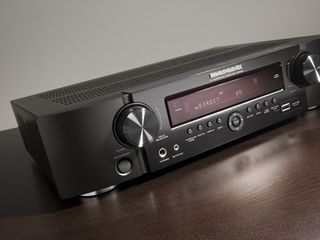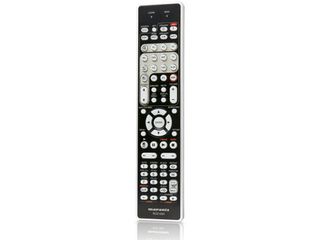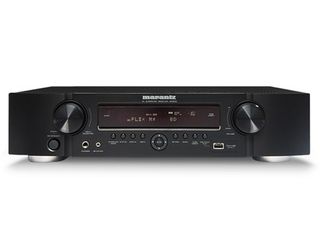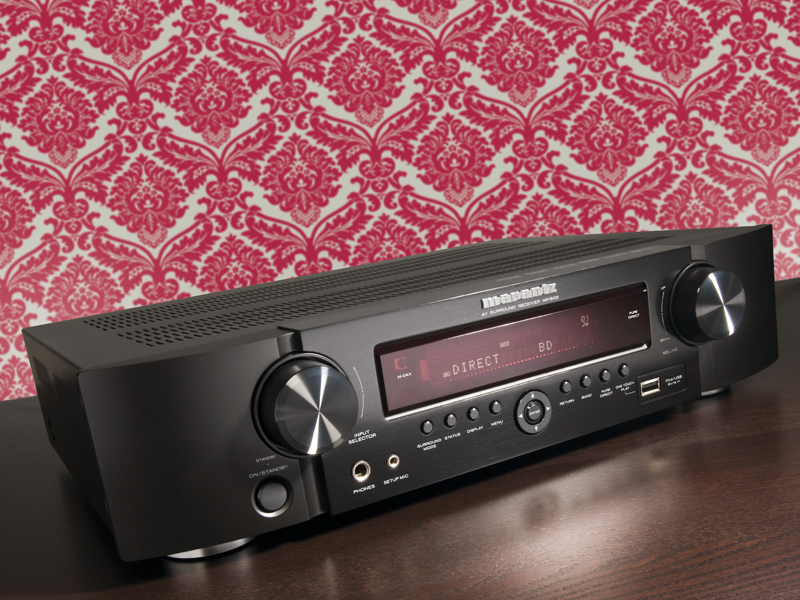Why you can trust TechRadar

The balance of power
One inevitable consequence of the smaller form factor is that the NR1602 can't compete with the heavy power reserves of larger muscle amps. Its paper specification is 7 x 50W. Is this a deal breaker? My guess is that this is not going to prove problematic in the average living room.
Given that even in dedicated home theatres you're unlikely to run amplification at more than -15dB, this shortfall in welly is not difficult to live with. Indeed, I ran both music and movies in multichannel mode and never felt short-changed.
Surprisingly, the little NR1602 does a splendid job driving large speaker loads. I used it with sizeable Definitive Technology Reference boxes. Laced up to a more sensible speaker package (maybe something smaller from sister brand Boston Acoustics) and it'll rock the house.
Multichannel Super Audio CD on the NR1602 is a treat. Hooked up to Marantz' UD7006 Universal Blu-ray player, this AVR sounds relaxed and open. Emi Fujita's MOR crooning (Camomile Best Audio, Japanese import), not only exhibits terrific width, but also has tangible depth. It's like 3D for the ears.
The NR1602 also handles fast transients with snappy ease and exhibits more than enough energy to cope with the sonic excitement of the Tron: Legacy bike duel. Tron's 7.1 Blu-ray soundtrack remains one of the best of the year, and this little box does a thumpingly good job with it. Not only is the directionality of its steering effortlessly sharp, there's a roundness to the dialogue and a depth to the LFE, which makes for surprisingly rich listening.

It's worth stretching to a full 7-channel speaker complement if you can. The smattering of 7.1 Blu-ray audio mixes is worth the indulgence. And while the best you'll get from broadcasters at the moment is Dolby Digital 5.1, the NR1602 can evenly distribute this using Dolby EX to all channels. This post-processing mode works well and I'd recommend using it if you're running with an expanded setup.
If you don't plan on running rear back speakers, you can assign the spare channels as a stereo feed to another room.

TechRadar Labs
Power consumption: Watts
Idling: 35 Watts
Lower than much of the full-fat AVR competition, but still quite high.
Powered: 75 Watts
An average consumption figure with movie footage at a sensible listening level.
Power ratings: Watts (8Ω , 0.5% THD)
2-channel 8Ω: 55 Watts
We measured 55W per channel in stereo mode, a smidgeon over Marantz's spec.
5-channel 8Ω: 30 Watts
The usual drop off in multichannel mode, but 30W should be fine for many setups.
Untainted: Watts
Marantz NR1602: 35 Watts
Yamaha RX-V367: 79 Watts
Pioneer VSX-920-X: 60 Watts
Onkyo TX-SR308: 40 Watts
Fidelity firewall: A measurement of power untainted by distortion (0.02THD, 8Ω, 1kHz).
Signal/noise: dB
20Hz: 78 dB
1kHz: 78dB
20kHz: 78dB
S/N tests: Consistent measurements across the frequency range.
Winter warmer

While most users will naturally rely on HDMI for sound and vision, the NR1602's analogue inputs offer toasty warmth. Compact Discs played on the aforementioned UD7006 and routed in via the stereo analogue inputs with Pure Direct selected, are as smooth as a cauldron of Swiss chocolate.
Mozart's Violin Concerto in D Major (from 2L) offers no sense of no digital harshness – it's just delicious. While the NR1602 may not throw quite the same long shadow as traditional home cinema receivers, it doesn't lack in audacity.
In the maelstrom of mass market AV receivers, it's a slimline oasis of style and substance. Indeed, when it comes to networked theatre, it has few peers at the price.
Follow TechRadar Reviews on Twitter: http://twitter.com/techradarreview
Steve has been writing about AV and home cinema since the dawn of time, or more accurately, since the glory days of VHS and Betamax. He has strong opinions on the latest TV technology, Hi-Fi and Blu-ray/media players, and likes nothing better than to crank up his ludicrously powerful home theatre system to binge-watch TV shows.














